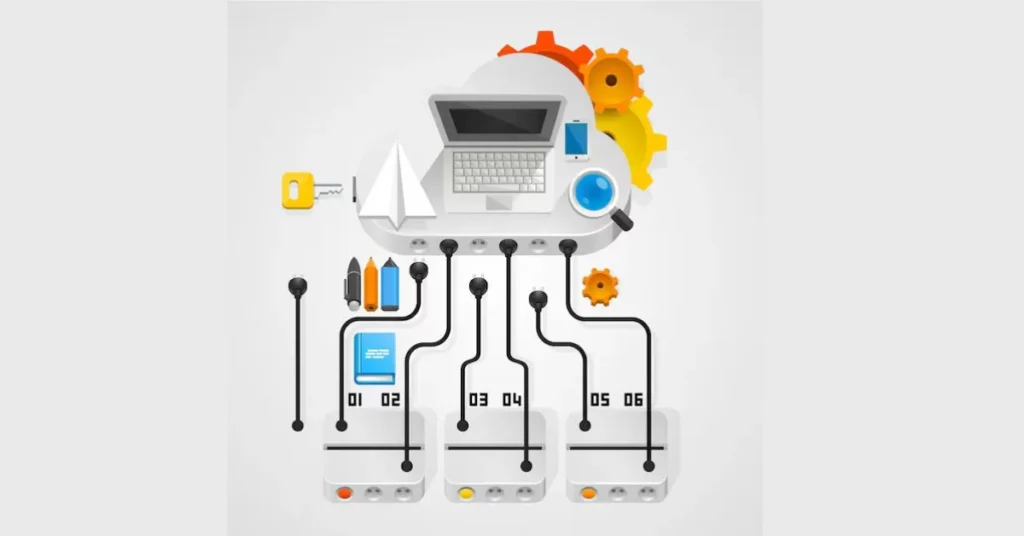Integrating the VEX V5 Brain with WebSocket opens new possibilities in real-time communication and robotics control. By leveraging WebSockets, a protocol for two-way communication between a client and server, you can enhance how the VEX V5 Brain interacts with other devices. This connection allows instant remote control, live data collection from sensors, and integration with web-based applications. Whether for educational purposes, competitions, or advanced robotics projects, this setup helps elevate your robotics game. Let’s explore how to make this powerful connection and its key advantages.
What Is the VEX V5 Brain?
The VEX V5 Brain is the heart of the VEX Robotics system. It controls motors, sensors, and other peripherals, making it crucial in STEM education and robotics competitions. The V5 Brain is programmable using VEXcode, a versatile platform that supports C++ and Python. Key features of the VEX V5 Brain include:
- 8 motor ports for controlling movement and other functionalities
- 4 sensor ports for connecting various input devices like gyroscopes and distance sensors
- Color LCD for real-time feedback and easy control
- High processing power, making it significantly faster than previous models
This advanced microcontroller allows users to write custom programs, which can then be executed to control the robot in various applications.
Understanding WebSockets
WebSockets allow continuous, two-way communication between clients (e.g., the VEX V5 Brain) and servers. Unlike traditional HTTP, which requires constant request/response cycles, WebSockets keep the connection open, enabling seamless data exchange. This real-time communication is critical for applications where low latency and quick feedback are essential, such as controlling robots remotely or gathering sensor data in real-time.
Why Use WebSockets with Robotics?
WebSockets provide the speed and flexibility needed for real-time robotics applications. Instead of waiting for a traditional server response, WebSockets enable instantaneous communication between the robot and a remote device, making it ideal for:
- Real-time control: Commands can be sent and executed instantly without delay.
- Live data transmission: Sensor data can be streamed continuously, allowing real-time monitoring of the robot’s environment.
- Integration with web-based applications: You can easily control and monitor the robot through a web interface.
Prerequisites for Connecting VEX V5 Brain to WebSocket
Before diving into the technical setup, having the following hardware and software in place is essential.
Hardware:
- VEX V5 Brain with connected motors, sensors, or other peripherals
- A computer or mobile device for programming the V5 Brain
- A Wi-Fi adapter or Ethernet connection for network access
- Stable internet connection
Software:
- VEXcode Pro for writing and uploading the robot’s program
- A WebSocket library (e.g., Boost. Beast or WebSocket++) to implement WebSocket communication in C++
- A WebSocket server (e.g., Node.js or Python) to receive and send messages
Having these elements ready ensures the setup and communication between the robot and the server proceed smoothly.
Setting Up the VEX V5 Brain for WebSocket Communication
Some initial setup is required to enable the VEX V5 Brain to communicate with a WebSocket server.
1. Install VEXcode Pro
Begin by downloading and installing VEXcode Pro, which provides the environment for programming the VEX V5 Brain. This software allows you to write programs in C++ or Python, suitable for setting up WebSocket communication.
2. Connect the V5 Brain
Ensure the VEX V5 Brain is powered on and connected to the computer via USB or a Wi-Fi module. This connection enables you to transfer programs to the brain for execution.
3. Prepare the Wi-Fi Adapter
For WebSocket communication, wireless connectivity is crucial. Ensure the Wi-Fi adapter is installed correctly, or use an Ethernet cable for wired communication.
Setting Up the WebSocket Server
The WebSocket server is the counterpart that communicates with the VEX V5 Brain. Here’s how to set it up:
Install WebSocket Library in Node.js
Install the WebSocket library for Node.js using the following command:
| Bash Copy code npm install ws |
Create a Simple WebSocket Server
Once installed, set up a basic WebSocket server with the following code:
| Javascript Copy code |
| const WebSocket = require(‘ws’); |
| const wss = new WebSocket.Server({ port: 8080 }); |
| wss.on(‘connection’, ws => { |
| ws.on(‘message’, message => { |
| console.log(`Received message: ${message}`); |
| }); |
| ws.send(‘Hello from the server’); |
| }); |
This basic server listens for messages from the VEX V5 Brain and sends responses.
Programming the VEX V5 Brain for WebSocket Communication
To enable the VEX V5 Brain to communicate with the WebSocket server, you’ll need to write a program using C++. A popular option is the Boost. Beast or WebSocket++ library for WebSocket communication.
Here’s a sample code for setting up a WebSocket client on the VEX V5 Brain:
| Cpp Copy code |
| #include <boost/beast/websocket.hpp> |
| #include <boost/asio.hpp> |
| #include <iostream> |
| int main() { |
| boost::asio::io_context io_context; |
| boost::beast::websocket::stream<boost::asio::ip::tcp::socket> ws(io_context); |
| // Connect to WebSocket server |
| ws.connect(“ws://your-server-ip:8080”); |
| // Send a message |
| ws.write(boost::asio::buffer(“Hello from VEX V5”)); |
| // Receive message |
| boost::beast::flat_buffer buffer; |
| ws.read(buffer); |
| std::cout << boost::beast::buffers_to_string(buffer.data()) << std::endl; |
| return 0; |
| } |
This code enables the VEX V5 Brain to send and receive messages through WebSocket.
Testing the WebSocket Connection
Once the VEX V5 Brain and the WebSocket server are set up, testing the connection is time.
Steps for Testing:
- Start the WebSocket Server: Run the server code on your computer.
- Upload the Program to VEX V5 Brain: Ensure the brain is connected, and upload your WebSocket client code.
- Monitor Messages: Check that the VEX V5 Brain successfully connects to the WebSocket server and exchanges messages.
Testing is essential to ensure everything is working, from network connectivity to the code’s correctness.
Applications of VEX V5 Brain with WebSocket
Using WebSockets with the VEX V5 Brain opens up a variety of exciting applications:
Remote Robot Control
You can control the robot from anywhere in real time using WebSockets. This makes it ideal for competitions, where precise and quick control is essential.
Live Sensor Data Monitoring
Streaming sensor data through WebSocket allows you to monitor the robot’s environment live, analyzing sensor data remotely.
Integration with Web Applications
Integrating robotics with web-based applications allows you to visualize real-time data and remotely control robots from a web browser, enabling further automation and innovation.
Security Considerations
Security is critical when using WebSockets for robot control or live data streaming. SSL/TLS ensures data transmission is encrypted and secure, preventing unauthorized access or breaches.
Performance Considerations
Real-time applications like robotics require low latency. Here are a few tips to optimize performance:
- Minimize latency by optimizing your code.
- Use a stable network connection to avoid drops in communication.
- Optimize WebSocket settings to ensure smooth data flow.
Potential Challenges
While setting up WebSocket communication between the VEX V5 Brain and a server, you may face issues such as:
- Failed connections: Ensure your WebSocket server is correctly set up and accessible.
- Network latency: A slow connection could hinder real-time communication, so ensure a stable network.
Conclusion
Integrating the VEX V5 Brain with WebSockets offers exciting possibilities for robotics enthusiasts and professionals. From remote control to real-time data monitoring, WebSockets provides a robust platform for advanced robotics projects. You can unlock a world of innovation in robotics and real-time applications by setting up the proper hardware, software, and communication protocols.
FAQs:
Why use WebSockets with the VEX V5 Brain?
WebSockets offer real-time, two-way communication, which is ideal for live robot control and sensor data monitoring applications.
Can I use WebSockets wirelessly with the VEX V5 Brain?
Yes, you can establish a wireless connection for WebSocket communication with a Wi-Fi adapter.
Is WebSocket communication secure?
SSL/TLS ensures that WebSocket communication is encrypted and secure from potential threats.
What is the main advantage of WebSockets over traditional HTTP?
WebSockets provide full-duplex, real-time communication, unlike HTTP, which is request/response-based.
Can I integrate WebSocket-based VEX V5 control with a web app?
Yes, WebSockets can be integrated with web applications, allowing you to control the robot from a web interface.
Top of Form
Bottom of Form



